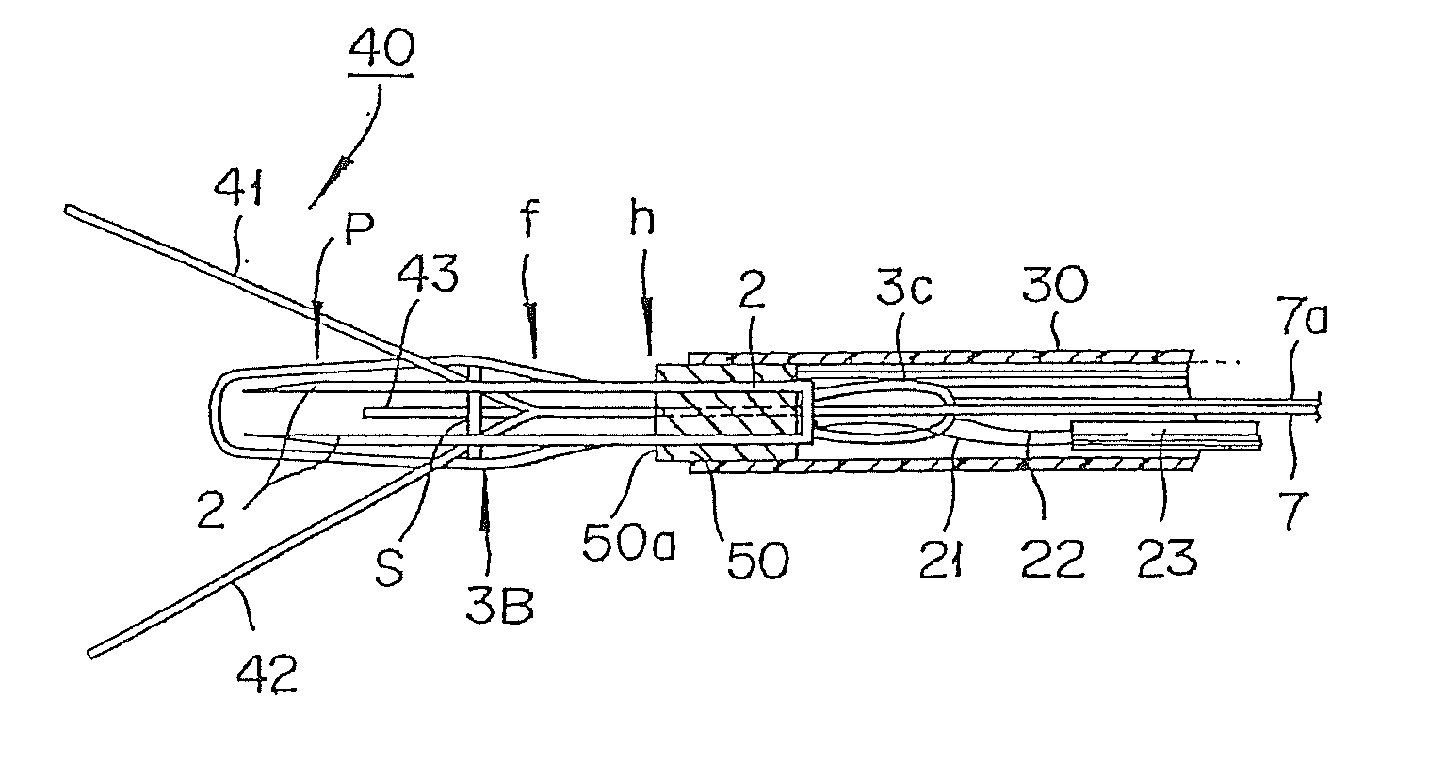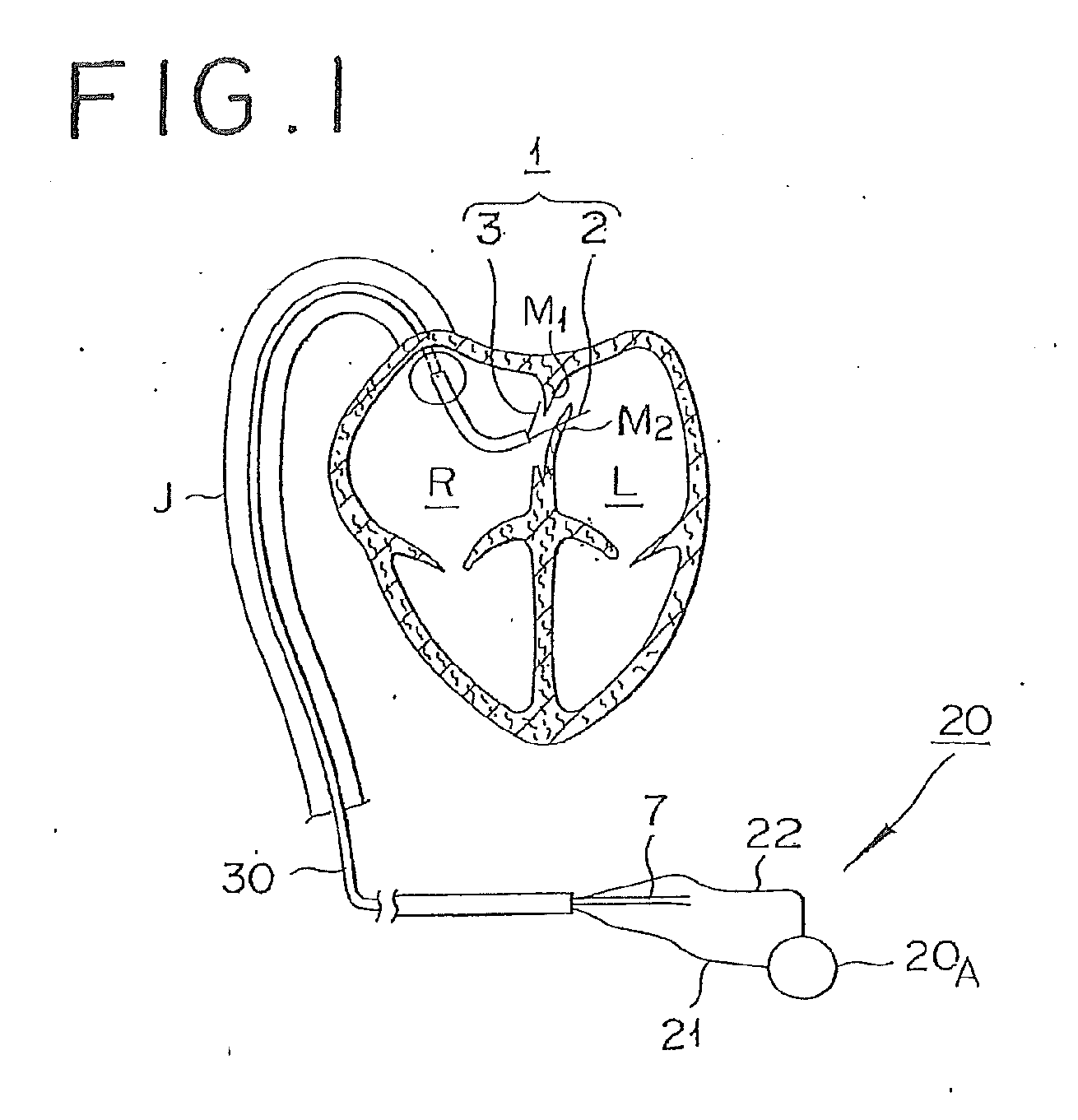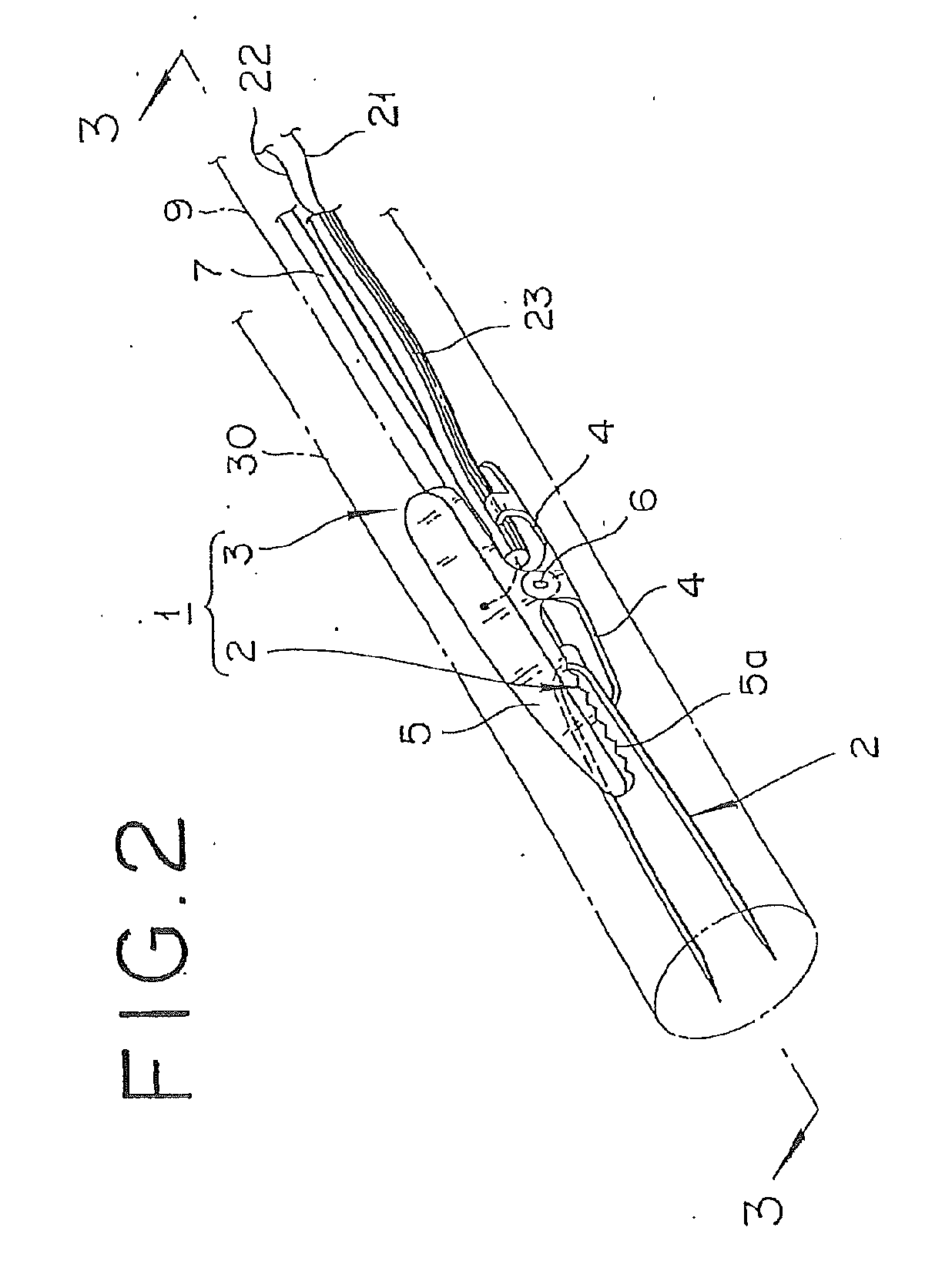Pfo closing device
a technology of a closing device and a foramen ovale, which is applied in the field of medical devices, can solve the problems of stroke or migraine, difficult dosage management, and inability to stop bleeding easily, and achieve the effects of speeding up the procedure, facilitating the procedure, and being convenient to us
- Summary
- Abstract
- Description
- Claims
- Application Information
AI Technical Summary
Benefits of technology
Problems solved by technology
Method used
Image
Examples
first embodiment
[0056]the PFO closing device disclosed here is described with reference to FIGS. 1-3. As shown in FIG. 1, the PFO closing device according to this embodiment generally includes clamping means 1 for clamping a septum primum (hereinafter referred to as SP M2) and a septum secundum (hereinafter referred to as SS M1), and energy-supplying means 20 for supplying energy to join the tissues clamped by the clamping means 1. The clamping means 1 is movably positioned in the distal end (tip) of an elongated member 30, which includes a lumen, in a manner allowing the clamping means 1 to protrude out of and retract into (e.g., be movable forward and rearward) the elongated member. In the illustrated embodiment, the elongated hollow member (elongated lumen-possessing member) is a percutaneous catheter 30. In use, the clamping means 1, while being wholly stored or positioned in the catheter 30, is inserted in an inferior vena cava J. Then, in performing the procedure, the clamping means 1 protrud...
second embodiment
[0075]The PFO closing device according to this second embodiment is preferable from the standpoint that the clamping means 1 can be stored or positioned in a catheter 30 in a more compact manner.
[0076]As shown in FIG. 6, the PFO closing device in this embodiment generally includes a guiding catheter 31, the catheter 30, the clamping means 1, positioning means 40, and energy supplying means similar to the energy supply means of the first embodiment. The guiding catheter 31 is provided at an outermost portion of the device. The catheter 30 is positioned in the guiding catheter 31. The clamping means 1 includes the needle part 2 positionally fixedly provided inside the catheter 30 to protrude from the distal end of the catheter 30, and a clamping member 3A turnably provided in the outside of the distal end portion of the catheter 30. The positioning means 40 is for positioning the needle part 2 at the center of the PFO 0.
[0077]As shown in FIG. 7, the needle part 2 constituting one side...
fourth embodiment
[0107]the PFO closing device is shown in FIGS. 20-24. In the description which follows, features of this embodiment of the closing device which are the same as those associated with the embodiments described above are identified by the same reference numerals, and a detailed description of such features is not repeated.
[0108]This fourth embodiment is basically the same as the third embodiment, except that the positioning means 40 and the gripping member (clamping member) 3B are somewhat different. As shown in FIGS. 20 and 21, a support 50 is provided with six lumens. The elongated members of the needle part 2 pass through first and second lumens LI, L2 of the support and are positionally fixedly attached to the support 50. The spaced apart legs of the clamping member 3B pass through the third and fourth lumens L3, L4 of the support 50, and the positioning means 40 passes through fifth and sixth lumens L5, L6 located at intermediate positions between the lumens L1, L2 and L3, L4.
[010...
PUM
 Login to View More
Login to View More Abstract
Description
Claims
Application Information
 Login to View More
Login to View More - R&D
- Intellectual Property
- Life Sciences
- Materials
- Tech Scout
- Unparalleled Data Quality
- Higher Quality Content
- 60% Fewer Hallucinations
Browse by: Latest US Patents, China's latest patents, Technical Efficacy Thesaurus, Application Domain, Technology Topic, Popular Technical Reports.
© 2025 PatSnap. All rights reserved.Legal|Privacy policy|Modern Slavery Act Transparency Statement|Sitemap|About US| Contact US: help@patsnap.com



